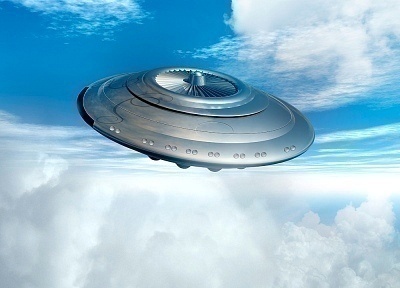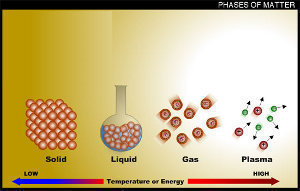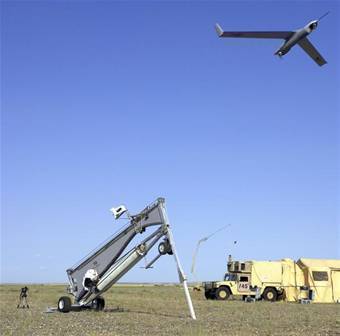True antigravity propulsion involves using a material or technological effect that counteracts the effects of gravity without using aerodynamic lift, electromagnetism, or some other balancing force. Likewise, antigravity does not refer to situations in which an object or person experiences lack of weight such as being in a pool, free fall, or high altitude orbit. Virtually all antigravity propulsion systems and experiments that scientists introduced to the public and that supposedly defied gravity could not be supported with concrete evidence. Furthermore, no third party could recreate it. This fact has not swayed countless physicists and researchers, however, who are still rigorously trying to find a true antigravity solution.
General Relativity
The biggest problem facing scientists pursuing antigravity is the fact that gravity is not a force in and of itself. Rather, it is the effect of a force. According to Albert Einstein’s general relativity definition, large bodies of mass (such as planets and stars) that create dips in the fabric of space cause gravity. These “sink holes” in space cause other objects to be pulled toward them. This can be seen when a large sheet is stretched by each of its corners so that the entire sheet is in the air. If a large object, such as a baseball, basketball, or even a bowling ball is dropped on top of the sheet, it will create a dip in the sheet immediately beneath and around its surface. If a marble is then dropped on top of the sheet near the larger object, it will roll into the dip that the larger object created. Gravity simply refers to the smaller object being attracted to the larger object due to its dip in the fabric of space.
Negative Mass
The term “negative mass” refers to a hypothetical material that has a total mass less than zero. While this is not possible in the known understanding of physics, scientists are trying different types of matter to see if gravity affects any of them in a different way. Dark matter, an invisible framework of the Universe that bends light but allows regular matter to pass through it, has been ruled out as a candidate for negative mass because its discovery depends on its gravitational effects on other objects. Although dark energy and antimatter have not yet been fully studied or understood, they hold the most promising chances of producing an antigravitational effect.
Lifters
A lifter (ionocraft) is a craft that can be lifted into the air with ionized oxygen particles that the craft generates and directs beneath it in order to create thrust. Lifters are made up of a balsa wood (or other nonconductive material) equilateral triangle that is wrapped in foil and has a smooth, round surface. Conductive electrodes are placed at each vertex of the triangle and a conductive wire, such as corona wire, connects each electrode. Several thousand volts are then applied to the wire.
As air drifts into the device’s “air flap,” oxygen particles are ionized and pushed directly beneath the lifter, causing the lifter to float. In practice, this device is not very effective and releases an ozone byproduct, a toxic chemical that causes breathing problems, heart disease, and lung disease when inhaled. Likewise, claims concerning the lifter’s ability to float in a vacuum have been disproven. Although the lifter claims to use antigravity technology, it clearly does not.




Thomas Welch
Your description of what gravity is supposed to be is probably the best so far. You say gravity is not a force but an effect ,so you may not be aware that a small number of engineers over the last forty years have shown that using a gyro driven a in a particular way causes linear movement. However these in my opinion clever men did not join the dots to make a working model. But what is unforgivable the physics hierarchy dismissed these men out of hand ,because they could not be wrong .There is gravity propulsion, but the best you could probably achieve if you lighten a craft using light metals etc is to nullify the crafts weight you would need a power plant like the new Sabre rocket/jet.But off course you won’t believe me.
D Watson
Almost 20 years ago, while still in high school I designed and explained my own concept of a Gravitational Propulsion System.
It started out as a class assignment where we had to write an essay on an idea of our very own. We had all school year to write the essay.
I started with one typical 3/8 inch spiral notebook on the subject of Gravitational Propulsion, but by the time I finished I had filled three one inch thick spiral notebooks. (yes hand written as I didn’t own a computer). Including drawings and diagrams and an in-depth mental-exploration as to how I thought that such an engine would work in a UFO, I expounded on the reasons that such a system would fail within our atmosphere. Hence, why, I speculated, that a craft designed on a different world where gravitational parameters are different than our own, would work in space travel but such a system would fail when entering too far into our own atmosphere.
I even dedicated one whole spiral notebook to a side idea of a Gyroscopic propulsion system idea as well.
My teacher kept my articles and would not return them to me.
I’m fixing to turn 50 now and just read an article where someone describes the concept of a Gyroscopic Propulsion System, that sounded remarkably like the article I wrote so many years ago.
I wish that there was a Blog where people with ideas like this could air their ideas, throw them around and possibly learn from each others ideas and improve on them as we go.
If there is such a place on the internet, I haven’t found it yet.
D Watson
Ok! so it was more than 20 years ago. (The devils in the details)
D Watson
When you think about a Gravitational Propulsion system, in an environment like space where there is no resistance to movement then the speed one could obtain would be, for all practical purposes, limitless.
How long it would take to reach such a speed would not depend on MASS or WEIGHT since things like DRAG and RESISTANCE TO MOVEMENT would not play a factor.
Martin J Sallberg
Breakthrough in space travel.
String theory (and all other theories involving hidden dimensions)
predict that gravity and electromagnetism unify in hidden
dimensions and that the hidden dimensions are indetectible because of
their small size. It does also predict that sufficiently short-waved
photons, with wavelengths shorter than the size of the hidden
dimensions, can enter them. Producing ultra-short photons can thus
manipulate gravity, with revolutionizing space travel applications such
as cheap anti-gravity launches. The
problem that it would require high energy can be practically solved by
concentrating several laser beams on a nanoparticle, heating it to
locally extreme temperatures. An Alcubierre metric can be created by
ejecting multiple nanoparticles from the craft and then beam perfectly
timed laser beams on them (fire at the most distant first so that they are
hit simultaneously), so each nanoparticle contributes a slower than
light effect but together add up to faster than light, creating no discrete
event horizon and thus no Hawking radiation.